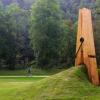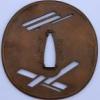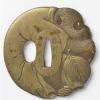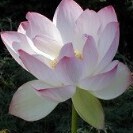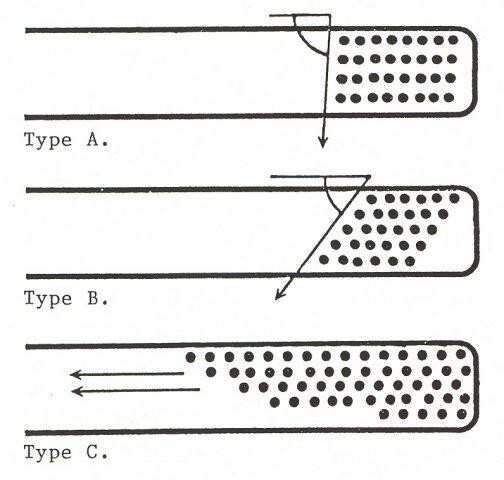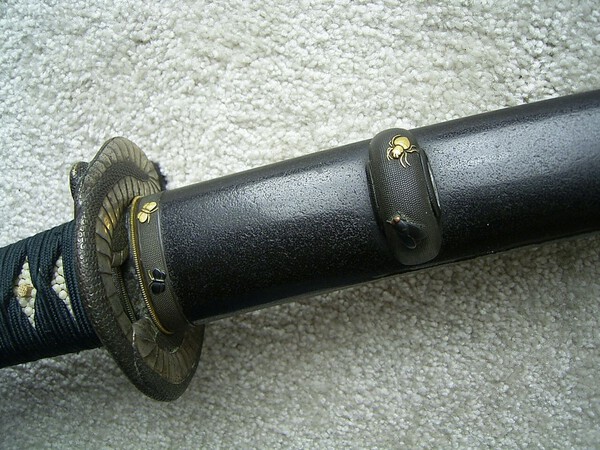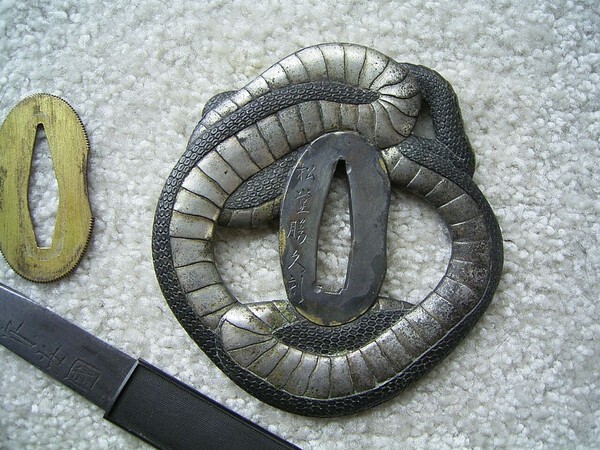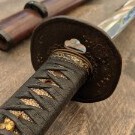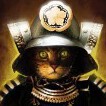Leaderboard
Popular Content
Showing content with the highest reputation on 09/10/2024 in all areas
-
Tadahiro is a good example because they are plentiful and similar. It's the closest we have to a commodity in the Nihonto sphere. This lets us compare different attributes and think more deeply about price determinants. Tadahiro_1: 1M yen Tadahiro_2: 2M yen Tadahiro_3: 3M yen For most in the West, Tadahiro_2>Tadahiro_3>Tadahiro_1. Why? It's an excellent example because it illustrates some of the difference between Western appraisal of value and Japanese appraisal of value. Koshirae: West > Japan In the West, having a koshirae is highly valued. It's known to Japanese dealers, hence they'll adapt low quality koshirae to sell blades to the western markets. In Japan, sword collectors typically do not care. These are seen as two separate objects, and they appeal to distinctly different collectors types. It's a completely different world in terms of knowledge. Jigane consistency: West > Japan Western buyers are highly sensitive to minute defects in the jigane such as ware, showing of shintetsu, or irregularities (nagare elements). Much less so in Japan. In fact, if one carefully studies the elite blades (Tokuju/Jubi/Jubun/Kokuho), these types of defect are often present, even in the highest ranking smiths. Jigane consistency is not to be confused with brilliance/wetness (Uroi). The uroi quality of the jigane is a highly valued attribute in Japan, even in the presence of nagare elements or ware disturbing the consistency of the jigane. Brightness of the Hamon: Japan > West The attribute of "bright and clear" or Saeru is the most important attribute of a sword in Japan. This manifests as clarity in the Jiba, the contrast between the ha and the ji, and the overall consistency of the nioiguchi, a ha free of blemish (Shimi), and overall distribution, type and variety of nie. These are paramount qualities. There are differences between schools in how these qualities are appraised (e.g., Soshu vs Bizen), but these are advanced topics best left for another discussion. Now go back to the 3 Tadahiro and look at the hamon photos. Tadahiro_1: suffers from a grave flaw on a suguha blade: inconsistent nioiguchi. There is an area where the nioiguchi expands upwards and downwards, this is considered a lack of control by the smith and disqualifies the blade as a good sword. This explains the price, it is simply a bad example of Tadahiro. Mistakes happens. Tadahiro_2: the nioiguchi is rather consistent. Check. However, the contrast between the ha and the ji is not pronounced. Hence, it is not 'bright and clear' - rather, the noiguchi line is and the hamon is rather unremarkable. The Jigane is consistent everywhere, and it has a koshirae and a horimono. This appeals to the western market, but is very weak in the Japanese market. Tadahiro_3: the nioiguchi is deep and consistent. The ko-nie laden nioiguchi creates a bright contrast with the ji, and extends downwards towards the ha. There are kinsuji forming into the ko-nie, another sign of a good sword. These attributes are highly valued and constitute the essence of a masterfully crafted sword. Now, there is shintetsu showing. Big problem in the West, not so much in Japan. For these reasons, Tadahiro_3 > Tadahiro_2 > Tadahiro_1 - and while this hierarchy will be quite obvious to any intermediate student in Japan, it's puzzling for us in the West simply because we value attributes differently. For the sake of simplicity I'm leaving out other attributes (Motohaba, Sori, Nakago condition). These attributes are overshadowed anyway by the stark contrast in the Jiba of these works.8 points
-
Dear Emil. As no one else has answered you I will offer my thoughts. I have not been able to find this idea in Nagayama so I may have misunderstood your question. The mitsukado is not generally considered to be an indication of the smith's skill or lack of it, the boshi most certainly is. During yakiire the smith is controlling a sometimes very long blade and controlling the temperature in the boshi is a very skillful thing to do. Hence a well done boshi, one which demonstrates the smith's control, is indicative of a high level of skill. (See page 108 in Nagayama) The smith is responsible for the sugata of the sword and in this case forges the kissaki to shape and then the polisher is the one who finally defines the precise shape of the blade though in theory the polish will remove very little metal and the polisher will have a high regard for the intentions of the smith. It is conceivable that a poor polish might result in the mitsukado not being geometrically correct, the three lines that meet here are the result of three surfaces and poor shaping could result in the lines not meeting here. I have seen polishes where the yokote has been poorly applied and seems to miss the junction, for example. You would not expect to see such things from a properly trained togishi. Hope this helps. All the best.6 points
-
I have my doubts, it will boil down to the classic garbage in, garbage out scenario. The problem that may come around is that the water gets so muddied that it's no longer possible to rely on internet-based research as no-one knows what sources are trustworthy or that it becomes accepted as reliable because, well it's the internet isn't it. We are cursed with living in interesting times.5 points
-
Hi Josh, It is good that someone who knows more than you is going to see your sword in hand but I suggest you go that far and no further for now. You don't know anywhere near enough to make informed decisions about possible restoration and shinsa. Polish and shinsa may be appropriate for the sword but there is no reason to hurry; polish does nothing to preserve the sword - a light coating of oil does that. See: I'm new to Japanese swords and I want to get my 1st sword polished and/or have koshirae made for it. in FAQ under Nihonto Info above. The more you know before you spend money on the sword the happier you'll be with the results. Grey4 points
-
Adding another article on the topic, use ChatGTP for translation. In short, Japanese swords were made of tamahagane mostly in the later years and during Edo. Earlier, imported steel from China and Korea was used to make katanas in Japan. This is part of a wider topic that Noriyuki Omura is advocating on his website. Who I had the pleasure of exchanging emails with. See: http://ohmura-study.net/003.html His main thesis is that the Japanese sword community is snobbishly discriminsting Showa-to from being considered Nihonto, on false grounds. Japanese swords were never exclusively made of tamahagane and the process of making a sword was never unified anyway. All sorts of methods and steels have been used throughout history and by different smiths at the same time. Special ordered or Koto massproductions, they are all considered Nihonto. The evolution of the forging process took place in parallelly inside the country for centuries, but the last evolution which led to the revival of Japanese swords and possibly saved the art form is neglected. Mainly due to politics and lack of historical knowledge, the current legal definition of Nihonto is restricted to the very narrow Edo style production methods of both the steel and forging, which unfortunately excludes Showa-to. His father laid down his life in the last stand, defending Japan from the American occupation. He asks why the same respect is not granted that sword, which was carried by the modern Japanese warrior. He claims despite the Japanese sword community's attempt to discredit the Showa-to, many of them were better suited as weapons than Edo period swords which could be too brittle due to overemphasized focus on esthetics, which led to too wide hamon, etc. Especially Manchurian and Spring steel forged swords had an excellent reputation for their quality and durability in combat. I like this quote by Mr Omura: "as a result of the occupation policy, the art sword world has made the purpose of Japanese swords the beauty of the blade. This has led to a misunderstanding of traditional Japanese swords. As a result, the irrational notion that military swords made of superior steel are not Japanese swords has spread throughout the world. This is a big mistake." 再校刷-2.pdf4 points
-
日置流印西派免許皆傳 - Heki-ryu Insai-ha, full proficiency BTW, I learned Heki-ryu Insai-ha kyudo at the physical education class of my university in 1970.4 points
-
3 points
-
This came up in the cast tsuba thread by 'Dan Tsuba' a while ago. I forget the exact question but the AI fabricated several books and articles for its answer. So no, I don't think it's close to reliable yet. If it learns from the internet, will it ever be?3 points
-
Looks, Shinshinto to me. But it needs to be submitted to a shinsa. I'm basing this on the colour of the rust and the two holes. I've seen quite a few Shinshinto and Gendaito, with holes like this.3 points
-
Just my two cents - I think AI can eventually be useful in Nihonto identification, however similar to the way it is trained to spot cancer, known valid examples will have to be offered so it can "learn" what to look for. In breast cancer, for example, thousands of scans that were identified by the doctor as normal but where cancer was later identified in the individual, were used to train the AI. Currently, it can identify cancer not identifiable to the radiology technician (I forget what the accuracy rate is). I think an area where it could be most useful would be in mei authentication. If it can be shown enough scans of legitimate mei for a given smith, it could learn the subtleties of his chisel marks or whatever. Access to this program could be used by shinsa or by sword buyers just wanting to confirm a signature. The problem will always be garbage in; garbage out. There would need to be certainty that the mei used to train the AI are legitimate. John C.2 points
-
Oh wow I sounded like a jack ###. Sorry about that. Ted and I had a good phone call this morning. Long story short is he would need to see it in person to give a better idea what this sword is. He said it's an older blade and could be an excellent candidate for a polish. He also said that he is too busy and can't accept anything at this moment and connected me to Scott Colton up in Washington. He said him and his partner would be able to provide more insight about it. The steps I will probably be taking is: Get it in the hand of the expert to figure out what I have. Possibly get the handle rewrapped, as the wrapping is extremely delicate and has increasingly gotten worse just by handling it to take pictures. Post findings and probably sell the blade. It's not that I don't have interest in this blade, I'd rather find someone who could give this blade proper respect and care.2 points
-
To add, also steel from the Netherlands (anywhere, really). I did not know that, but it seems the "nihonto = tamahagane" narrative started, according to Prof. Omura, after the sword ban of Meiji. He adds in the conclusion that nihonto were not made with tamahagane during the bakumatsu because it was good steel, but because it's what the smiths could get their hands on. So tamahagane was mainly used for 70 years out of 1000 years of history for nihonto. This is a tough paper to digest (a lot of content, and it challenges my own ideas on the topic), but very interesting.2 points
-
Now that the technical aspect has been addressed somewhat, I’d like to add that Mitsukado is more generally used for three-joining road junctions, meaning ‘three corners’, a three-way crossroads. Similarly Mitsugashira is three heads, or the place where the heads of three road heads (for example) meet. Not too long ago someone was saying that a sword had had a new kissaki fashioned at one time. When I inquired, he pointed at the mitsukashira, how it looked sort of ok on one side, but didn’t quite match up on the other.2 points
-
I learned kyudo at university physical education class for one year. The supervisor of the class was Inagaki Genshiro sensei (稲垣源四郎).2 points
-
This is what passes for a tsuba on Yahoo /Jauce - and probably some escutcheon salesman's catalogue! Who's a pretty boy then? https://www.jauce.com/auction/u1152194818 Hey you get a free Kiri box with it Reminds me of these machine dial plates that were sold as "tsuba" [I wonder if they came from some WWII aircraft dial? - would at least have some story value!]2 points
-
2 points
-
There have been excellent posts made above. I think I will just expand this with various examples, as I will have plenty of those to add substance to some of the various points made in posts made to this thread. I made the Hizen Tadahiro comparison just to show some variety. Given they would all be priced equally I would personally choose the one with horimono & koshirae. However these swords are all of size and shape that I would not buy. To me personally I do not find this shape & size interesting and I would look for something else. Like Jacques I don't like to talk about the price of items that much. Of course I am in fortunate/unfortunate spot I cannot buy anything for several years, so for me it would all be speculative stuff anyways. And I do think sometimes we might get too attached to attribution the sword has been papered to or the level of papers by organization etc. Historical provenance is highly sought after, yet blades with proven historical provenance are pretty difficult to obtain to the collection. I am currently doing lots of research on provenance of famous old swords and there are still lots and lots of blades that have varying from of provenance. Sometimes I am not absolutely certain how the Japanese experts can connect the dots on some swords & provenance but I bow to their authority. I have only quite recently started being fascinated with this and there is so much to research and learn, I am bit shamed to admit I have previously overlooked this subject. Blades with proven provenance will be available for buying but they are often high quality items which of course puts them in expensive price bracket. I completely agree what @dyn @Mushin wrote about zaimei & mumei earlier in the thread. However there can be curveballs where other factors override the signature. For the smith Rai Kunitoshi, here is a signed tantō: http://web.archive.o....net/SHOP/O-225.html that was listed for 2,7M asking price, and here is a mumei tantō attributed to him: https://eirakudo.sho.../tanto/detail/750496 that was 3,5M asking price. Both items being Tokubetsu Hozon, and in my opinion they are now at their current end level with NBTHK classification. I couldn't see either of them going any higher. Small disagreements with attributions are perfecly understandable, as kantei for mumei blades is extremely difficult. Something like Mihara Masaie vs. Aoe I could very well understand. Here is another example that I found interesting as it was long very old tachi https://yushindou.com/生ぶ無銘太刀(伝古青江)(古波平)白鞘/. NBTHK attribution was Ko-Naminohira and NTHK attribution Ko-Aoe. Now while they might seem very different to me there is not too big difference between them. If I would had somehow acquired that item, would had been fun to send to Tanobe for 3rd opinion and see what he thinks of it. Unfortunately I am not yet that aware of NTHK attributions and I only have 1 of their 4 Yushu books. I plan to get all of them some day. However there are items with both NBTHK and NTHK attributions. Some of the famous so far might be Norishige tantō, Motoshige tachi, Yasumitsu tachi that are both Tokubetsu Jūyō and NTHK Yushu. Also I think there will be very high level experts in Japan even if the old guard passes. Of course often in Japanese way the students feel they can never surpass their teachers. However I would give props to modern generation of NBTHK staff too, reading the Jūyō setsumei, Tōken bijutsu magazine etc. I feel comfortable with their expertise as it far surpasses mine. Also what I have heard there are multiple unaffiliated experts in Japan too, and they teach too, so I feel confident the next generation of sword researchers keep it going. I have never met any of the top Japanese experts, just read their knowledge from books and I think same will happen in the future too. While the old experts had/have their mountain of knowledge, they were generous in sharing it and we have ever expanding amount of data in various easy to access forms currently. While it is possible some information will be gone, there are new things being discovered and researched.2 points
-
2 points
-
Up for sale is this large honking Myochin or Haruta armor maker style tsuba. [that is my best guess] Sunlight style texturing to the plate. 8.49cm high. 170 grams. About 5.5mm to 6mm depending where you measure it. Armor maker style, so obviously thickest at the mimi. I saw a very similar one attributed to Myochin in Chicago. This one is up for $250 + shipping to your country. It is a perfectly find big tsuba that came +1 as part of a two tsuba package where I wanted the other tsuba. ---The one in Chicago was $600. Nothing at all wrong with this wee beastie. It just isn't in my Higo and Owari interest areas. Otherwise, I believe it a perfectly good tsuba. Donation to NMB if it sells via NMB. Feel free to ask questions. Patience if I am slow to reply to PMs. It seems my mailbox fills up sometimes. Curran1 point
-
Nihonto-Steel.pdf Hello all, I have been recently quite miffed at the apparent return of the "Japanese SteEL was Baaaad" cliche on the internet. I've yet to seen anyone back their claim and decided to gather some of the most excellent data that has been published throughout the years. A lot is in Japanese, which means it remains inaccessible to many. At any rate, feel free to take a look at it. I have focused on the metallurgy, i.e. the chemical composition, microstructure, and mechanical properties. Cheers1 point
-
Hello, several years ago there were some interesting posts in the forum about tsuba in the shape of a snake. This year I got a wakizashi at an auction with a snake tsuba and a perfectly matching outfit. The handle winding was badly damaged, but all the parts were there, so I was able to rewrap it. When I get better at it, I will do it again. The mounting is beautifully executed in all parts. The insects with their antennae and wings, the tiny eyes, the delicate legs, just super. Maybe someone can translate the signature on the tsuba for me, all the other parts are unsigned. Greetings from Germany Uwe Translated with DeepL.com (free version)1 point
-
I have a bit of a question about this theory, since it seems that for most of the time that Japanese swords were produced, production was clustered around streams bearing quality iron sands. I don't know why this would be the case unless they were utilizing the iron sands to make tamahagane, and using that to make the swords. I'm sure that they did integrate steel from other sources when available, but the idea that tamahagane was only used as a primary material for 70 years seems pretty unlikely.1 point
-
I'm not a nihonto expert, but I work with AI language and image models regularly as part of my job and hobbies, and there's a lot of misinformation about what AI can and can't do... Language models do not know things. They simply create text that reads like the most likely answer based on the previous context it has access too. This means it is very good at creating things that sound right, but not things that are accurate, or would disagree with its previous context. Yes, you could create a more accurate model using only reputable sources (e.g. adding only Sesko's and others work, giving it none of the mess that is online sources (this would be stealing without permission though)). But it has no ability to reason or solve conflicts of information - it would simply try to create what best fitted the theme of the works previously provided, leading to decent accuracy but regular terrible mistakes that even a beginner would catch. This isn't to say that AI can't be used in the field of Nihonto though - I actually have high hopes with enough images and sources image models would be very useful at matching signatures against indexed swordsmiths. Similarly, the initial terribly inaccurate assessment can be used to speed up writing a human analysis or text, as it at least provides a starting point, however wrong. In general AI like most tech tools thrive on very specific datasets and tasks - general use (like trying to analyze all things about a sword), not so much.1 point
-
Is the kozuka unsigned? I've seen many snake tsuba, but I do not think I have ever seen a kozuka with a lady-bug on it. To me, that is the most interesting part. What design are the menuki?1 point
-
There are ~12,000 Juyo, but Tsuruta-san alone has 15 Juyo for sale right now. There is way more turnover than 100 a year. Tokuju is a different matter, but there are 10x fewer of those.1 point
-
IMHO ChatGPT is terrible at providing accurate information / facts and not good at true analysis of abstract information. Absolutely everything it tells you needs to be checked. Its strengths lie in quickly generating high volumes basic format content which can then be checked and refined by a human. Trust the 'facts' it spits out at your peril.1 point
-
Josh, Grey (above) is so right....just take in, what he is meaning1 point
-
To add about Prof. Omura's research paper, it is part of a larger research project, funded by JSPS (Japanese Society for the Promotion of Science, the main government agency for basic research funding, relatively competitive and attribution depends on both the application and the applicant's previous research results and achievements). The topic was "The iron that changed Asia " (アジアを変えた鉄). There was a symposium at Kyushu National Museum (https://www.kyuhaku..../event-220128-2.html), and Prof. Omura's own website gives more details (http://ohmura-study.net/410.html).1 point
-
Thank you Piers, I was told that these riding grounds used to be on the terrain of today's WASEDA University.1 point
-
Thank you Robert! Thank you for the comments too. I'll answer below, but I'll use your comments to upgrade the file. If I can get close to a "definite" version (HA!), I might upload it. I realized later I had forgotten to erase the duplicated Vickers hardness data. About the concentration of P and S, I have no idea where the sands/ore came from for the old swords (or rather if it was in Prof. Kitada's book, I skimmed over it...). About the folding part, it's the section I am not happy with; I wanted to get over it in one slide, and the nuance is difficult to get. I did want to explain that each type of steel was separately worked before being joined into the final block for the sword. And for the carbon content, I was amazed too. From what I understand, they usually look at the fractured areas when they break the initial metal before sorting into high or low carbon steel. It seems the folding tends to give a pretty consistent 0.5~0.6 mass% carbon, so maybe they realized that a certain number of folding cycles worked. I know that the people from older times were likely just as smart as us, but knowing how little technology they had, I am still amazed at what they did.1 point
-
1 point
-
If you like big flash superb metalwork plus a few lovely aikuchi etc…. https://www.bonhams....ion-of-Japanese-art/1 point
-
1 point
-
@Jussi Ekholm, your Tadahiro comparison is certainly interesting, precisely because we have a noticeable price difference here from one and the same swordsmith. You base your choice on the fact that price is not important. But it would be interesting not to do so, precisely in the spirit of the topic. Your choice is understandable. The blade is relatively well preserved, it has Horimono and it has a Koshirae. These are all factors that make such a sword very attractive to collectors on the general market. But it is priced exactly in the middle. So why isn't the most expensive Tadahiro in your comparison with such high market potential? Is it just because of the cut test of a well-known representative with a good, fairly early date? The appearance of the sword is marred by the fact that it has already lost some material. In some places the thin Hizen-Kawagane appears to have been polished through. In addition, the blade is machiokuri and the original Nakago-Jiri was cut off. Nevertheless, I think that this sword is the best of the trio in terms of quality. Although my opinion is irrelevant, I would go so far as to say: if this blade were in the best condition and Ubu, with the cutting test as a bonus - this sword would be a Juyo candidate! (Jussi, you know more about this, but I seem to remember that Nidai Tadahiro is the Shinto smith with the highest number of Juyo). But since this is not the case, it requires a collector who is willing to pay the price and is willing to accept the "problems". However, in the price range you have presented, Tadahiro katana with TH are very common. Collectors who are specifically looking for a Tadahiro have a choice and can set certain parameters, such as the time the blade was created, the shape and length, the characteristics of its signature and ultimately its style, which also includes gunome and choji. Your Tadahiro example in particular shows that the topic of prices and swords is not so simple and that you often have to look at each individual case. If the old guard continues to disappear, an era is certainly over. I don't have enough insight into the scene, especially in Japan. But I have the feeling that a certain elitist and hierarchical thinking was not beneficial in past decades. It is so important that students surpass their masters. Only then has the master done everything right. And only then will new, strong generations emerge. I emphasize again that I have too little background knowledge on the subject and I can only rely on my gut feeling. Old names are disappearing. Submitting kodogu and blades to a Shinsa of the NBTHK has become more difficult due to limitations and tight registration windows. The last Juyo sessions were the strictest in history. The positive thing, however, is that it counteracts the previous paper inflation. Yes, more young people in Japan seem to be developing an interest in Nihonto, also triggered by various anime and manga. At the same time, more and more museums in Japan are experiencing financial problems. The number of registered swordsmiths is also decreasing. There are discussions in Japan about whether the traditional training of apprentices in the swordsmith's home is still appropriate... Internationally, too, one must not forget that certain political activism and tightening of national gun laws are making it increasingly difficult for collectors in some countries to pursue their hobby. I would really like to be optimistic, but to be honest, I am anything but sure in which direction things will go in the future...1 point
-
MORIYAMA-SAN, thank you so much! Good to know that you were also taught in HEKI-RYU INSAI-HA. I think this was the closest school to real war-based archery of the SAMURAI era. The head of our school was INAGAKI SENSEI (HACHI DAN HANSHI) who visited Germany a number of times. I have very good memories of that time in Japan. The beautiful DÔJÔ was near KOBE, in KAWANISHI. KAWASHIMA SENSEI (6th DAN RENSHI at that time) was a very good teacher, generous, very patient and helpful.1 point
-
Thank you Emilll, it looks a very interesting article. I have saved it in case I ever get to the stage of reading Japanese fluently, but even so, it would indeed be nice to see an English translation... BaZZa.1 point
-
Slight update, I sent an email to Ted Tenold, this is what he said: I’ve looked over the images of your sword. It’s really difficult to clearly define many details from images, though you have done an admirable job in photographing the sword. It looks like it could be a candidate for restoration. Looks maybe early 17th century or perhaps very late 16th century. Could be a candidate for restoration but would ultimately require an in-hand evaluation to confirm it’s condition and workmanship. The koshirae is little better than average quality Type 98 Imperial Japanese Army Shingunto, in which the older blade has been fitted. There were a number of professional shops that supplied officers with the service of remounting older swords into new mountings, or supplying them with newly made traditional or non-traditionally made swords as military sidearms. He also said he is currently not accepting new projects and referred me to reach out to a local where I am located. I am going to have the blade inspected in person Friday. Happy to provide more updates1 point
-
Bugyotsuji, Here is the best picture of the other writing I could take. I wonder if there is a way to get under the rust and find the writing, as for the bisen I shall take a picture of that and a few of the other writings and stamps. There looks to be a mon? that was inlaid and partially removed made of silver aswell. thanks! David.1 point
-
Robert, many different sizes of bloomery kilns have been tried. It seems there is an efficiency threshold which makes too small kilns useless. The insulation of the kiln wall seems to play a role, and an inner height of about 120 cm, a top inner diameter of 25 cm, and a botton diameter of the reduction zone of 30 cm are seen as minimum. The efficiency factor can reach up to 30% or even a bit more if the dimensions and construction design are well balanced. In the end, operating a bloomery kiln successfully requires a lot of experiences. Different kilns, materials or conditions will yield different results; many details will have an impact on the function.1 point
-
Hi Josh, Do not use soot and tape and do not listen to anyone who recommends it; it causes damage to the patina. A clear photo of each side of the tang, taken with a raking light (from the side to better show markings) and on a dark background will do fine. Here you will find a care and handling brochure; you should read it twice but use micro fibre cloth rather than uchiko to remove old oil: https://nbthk-ab2.or...ord-characteristics/ Grey1 point
-
Could well be but I was looking at the ring of corrosion around the mekugi hole that appears to have had little impact on the integrity of the chisel marks.1 point
-
1 point
-
The older blade has been fitted for the war in Type 98 Japanese officer fittings. You can read about them here: http://ohmura-study.net/934.html Like John said, a close-up of the nakago (tang) will help the guys with date estimates, and if there is a smith name. The nagasa measurement HB is asking for is here:1 point
-
1 point
-
I am bad at reading kanji, but this looks like Muneyoshi 宗榮 which can also go as Soei. The style of yasurime and patina - from Kambun to WW2 period. The problem is that yasurime and nakago generally look ok for Harima lineage, but the writing does not really match its style. Otherwise its not a common name and I don't really see any matches. On the other hand the writing itself does not scream "gimei", but its not of great quality. This is where going through books would help, there were many generations and maybe one signed like this.1 point
-
1 point
-
1 point
-
Isabella, So very kind of you to share this info, thank you, and that picture of you two is quite lovely.1 point
-
黒蝋色塗鞘脇指拵 – Wakizashi koshirae of black lacquered saya 縁頭 草花圖赤銅魚子地高彫 – Fuch-kashira: figure of grass and flowers, shakudo, Nanako-ji, takabori 目貫 兜梅圖赤銅地容彫 – Menuki: Figure of kabuto-ume, shakudo-ji, katachibori 鐔 草花圖毛彫 – Tsuba: Figure of grass and flowers, kebori 小柄 秋草圖赤銅魚子地 – Kozuka: Figure of autumn grasses, shakudo, Nanako-ji (Red characters might be wrong.)1 point
-
And the proud buyer of cheap tsuba who’s never handled a tsuba blank or tagane knows nothing at all except how to speculate.1 point
This leaderboard is set to Johannesburg/GMT+02:00


